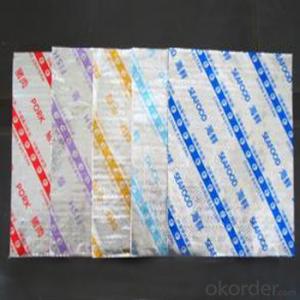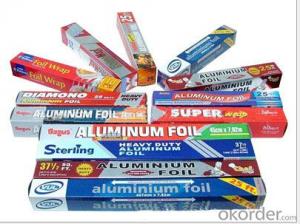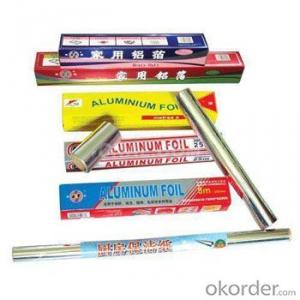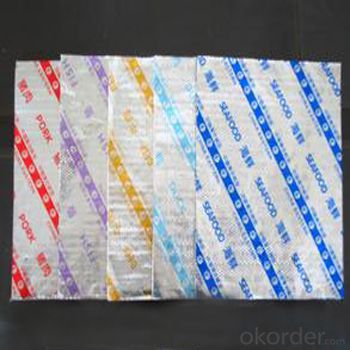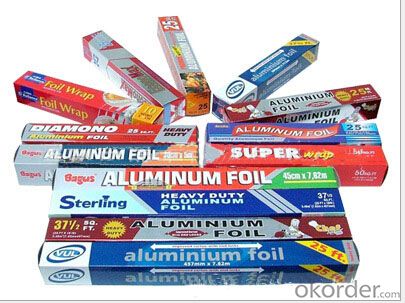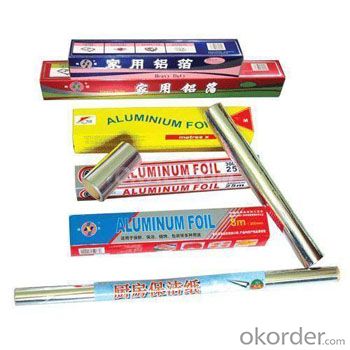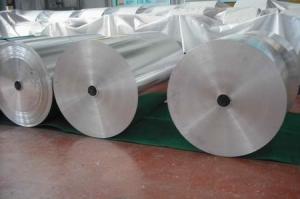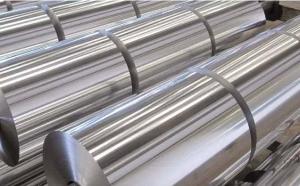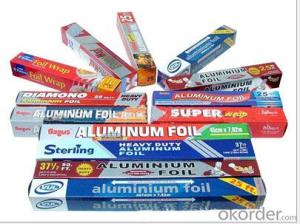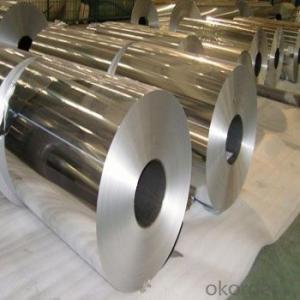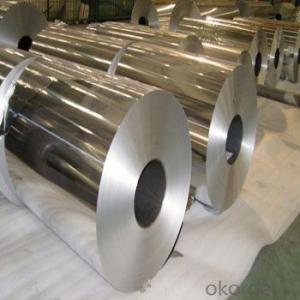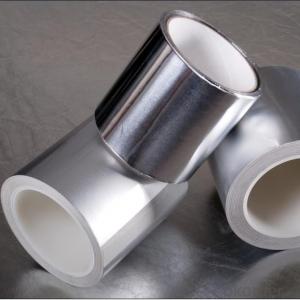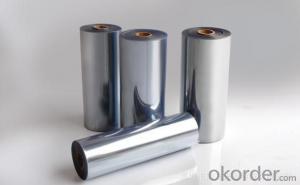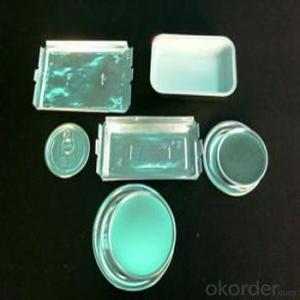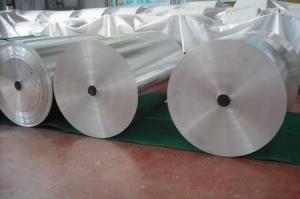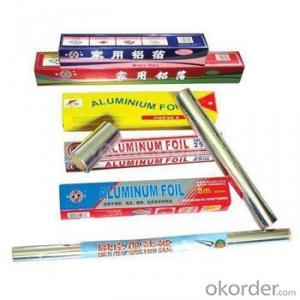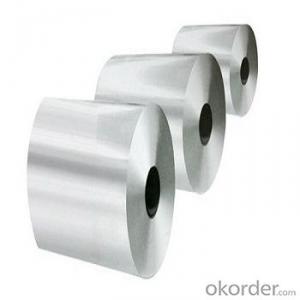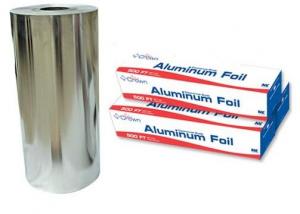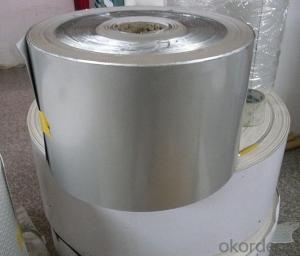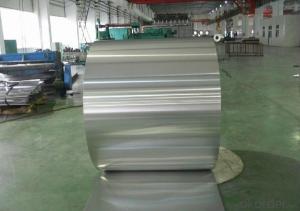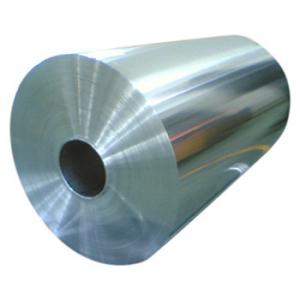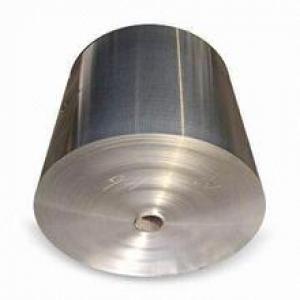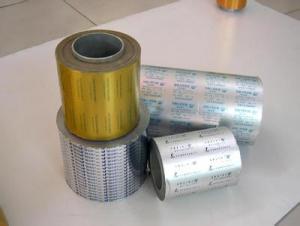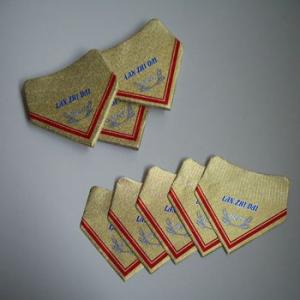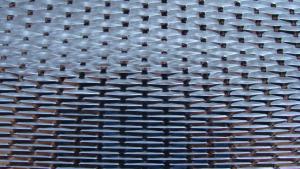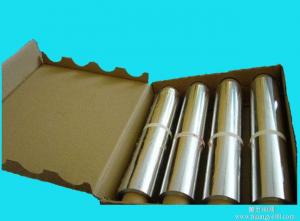Western Plastics Aluminum Foil - Household Foil for Everyday Use
- Loading Port:
- Shanghai
- Payment Terms:
- TT or LC
- Min Order Qty:
- 3 m.t.
- Supply Capability:
- 1000 m.t./month
OKorder Service Pledge
OKorder Financial Service
You Might Also Like
1.Desription
Aluminium is theoretically 100% recyclable without any loss of its natural qualities. According to the International Resource Panel's Metal Stocks in Society report, the global per capita stock of aluminium in use in society (i.e. in cars, buildings, electronics etc.) is 80 kg (180 lb). Much of this is in more-developed countries (350–500 kg (770–1,100 lb) per capita) rather than less-developed countries (35 kg (77 lb) per capita). Knowing the per capita stocks and their approximate lifespans is important for planning recycling.
Recovery of the metal via recycling has become an important use of the aluminium industry. Recycling was a low-profile activity until the late 1960s, when the growing use of aluminium beverage cans brought it to the public awareness.
2.Specification and Application
Household Foil Household Foils Using Aluminium
Application: Household packages
Alloy: 8011/ 1235
Temper: 0.009mm-0.04mm (±6%)
Width: 200mm-720mm
Mechanical Properties: Tensile Strength (U.T.S)≥ 50Mpa, Elongation≥ 1%
Standard: GB/ T3198 / ASTM-B209/EN 546
3.Details Introduction
Aluminium is theoretically 100% recyclable without any loss of its natural qualities. According to the International Resource Panel's Metal Stocks in Society report, the global per capita stock of aluminium in use in society (i.e. in cars, buildings, electronics etc.) is 80 kg (180 lb). Much of this is in more-developed countries (350–500 kg (770–1,100 lb) per capita) rather than less-developed countries (35 kg (77 lb) per capita). Knowing the per capita stocks and their approximate lifespans is important for planning recycling.
Recovery of the metal via recycling has become an important use of the aluminium industry. Recycling was a low-profile activity until the late 1960s, when the growing use of aluminium beverage cans brought it to the public awareness.
4.Pictures
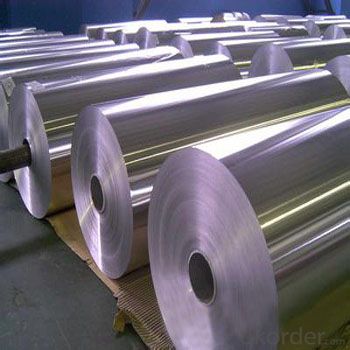
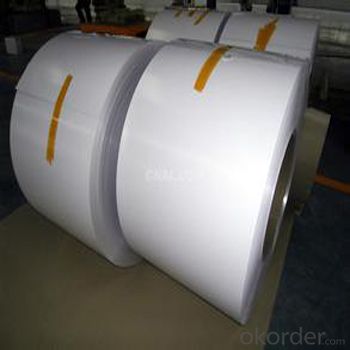
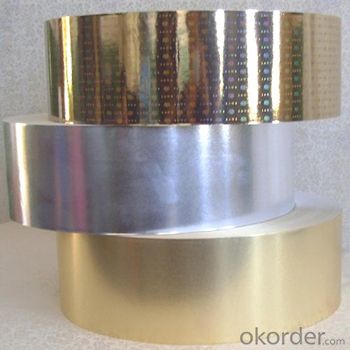
5.FAQ
1)How can we recycling aluminum?
Recycling involves melting the scrap, a process that requires only 5% of the energy used to producealuminium from ore, though a significant part (up to 15% of the input material) is lost as dross (ash-like oxide).An aluminium stack melter produces significantly less dross, with values reported below 1%.The dross can undergo a further process to extract aluminium.
In Europe aluminium experiences high rates of recycling, ranging from 42% of beverage cans, 85% of
construction materials and 95% of transport vehicles.Recycled aluminium is known as secondary aluminium, but maintains the same physical properties as primary aluminium. Secondary aluminium is produced in a wide range of formats and is employed in 80% of alloy injections. Another important use is for extrusion.
White dross from primary aluminium production and from secondary recycling operations still contains useful quantities of aluminium that can be extracted industrially.The process produces aluminium billets, together with a highly complex waste material. This waste is difficult to manage. It reacts with water, releasing a mixture of gases (including, among others, hydrogen, acetylene, and ammonia), which spontaneously ignites on contact with air;contact with damp air results in the release of copious quantities of ammonia
gas. Despite these difficulties, the waste has found use as a filler in asphalt and concrete.
2)Can we supply foilstock?
Yes, please check information below:
Aluminium Foilstock
Alloy: 1235/ 8011/ 8079
Temper: H14/H16/ H24/ H26
Thickness: 0.28mm-0.3mm(±0.01mm)
Width: 1000mm-2020mm(±1mm)
Core I.D:405/505/508mm
Standard: GB/T3198/ ASTM-B209
- Q: Let's a say an M16 or an AR-15 or an M4 that has a barrel made out of those metals instead of chrome-steel and nickel? How will it affect the rifles performance in terms of accuracy or distance of projectile?
- Kidyou have a class coming up in school that will cover physical sciencestry to stay awakeIf you failed it last yeartry to stay awake while you repeat it next year Any of the metals you listed would not tolerate the heat from any modern smokeless cartridge and projectilenor most of the blackpowder loads from years agoFolks tried bronze and iron in the earliest days of gunpowderthey did not work very well and wore out, burned out or blew up with regularity.
- Q: I need this answer for my science homework.
- Because it is a very good conductor.? Conductors reflect EM wavesAluminum foil loses its reflective ability when wavelengths get so small (X-rays etc.) that the space between free electrons becomes large relative to them.
- Q: would this mix for a sliver color still work1.potassium chlorate2.aluminum powder3redgum/shellac (replace this or leave out)4.dextirn
- Well, since you are making fireworks, the ingredients mentioned are used to keep critical components dry or separate one component from another.but if you had an exact proceedure instead of a recepie, you'd know thatSay high to BATF!
- Q: aluminum can be isolated from a molten mixture of alumina and cryolite by passing an electric current through the melt.
- Definately not good for bettas! All tropical fish need a constant steady temp in the mid to upper 70's and it is bad when it goes up and down by more then a degree or two within a 24 hour periodDo not put a heating blanket around the bowl! it will cause the temperature to spike and you wouldn't have to much control over that, you could end up killing your fish like thatDepending on how big of a fish bowl they are in you can invest in a small 7.5 watt heater that will raise the temp by a few degrees to keep it warmer but not get to highPretty sure I've seen them on dr.foster's website.
- Q: I want to make meat balls , but i DONT have any milk or eggsany ideas?
- I just he sounds just fineRemeber babies have thin skin and not as much fat as adults so he will be cooler than you
- Q: I am all out of aluminum foil and need to bake something that cannot be placed directly on the metal rackCan I bake, not broil, with paper plates and bowls without them potentially catching on fire?
- You would be better off putting what ever it is you need to bake into a frying pan (unless it has a plastic handle otherwise you can take the the handle off of a pot lid and place your item on thatDo NOT use a paper plate
- Q: is big or small cans of evaporated and condensed milk? i just want to make 2 servings of leche flan that can be fit into 2 llaneras.hope u cud help me.tnx!
- 1 can (390g) evaporated milk 1 can (390g) condensed milk 10 egg yolks 1 teaspoon of vanilla extract or lemon essence For the caramel: 1 cup sugar 3/4 cup water Leche Flan Cooking Instructions: In a saucepan, mix the sugar waterBring to a boil for a few minutes until the sugar caramelizePour the caramelized sugar into aluminum moulds - you can use any shape: oval, round or squareSpread the caramel on the bottom of the mouldsMix well the evaporated milk, condensed milk, egg yolks and vanilla by hand or blenderGently pour the mixture on top of the caramel on the aluminum mouldsFill the moulds to about 1 to 1 1/4 inch thickCover moulds individually with aluminum foilSteam for about 20 minutes OR Bake for about 45 minutesBefore baking the Leche Flan, place the moulds on a larger baking pan half filled with very hot waterPre-heat oven to about 370 degrees before bakingLet cool then refrigerateTo serve: run a thin knife around the edges of the mould to loosen the Leche FlanPlace a platter on top of the mould and quickly turn upside down to position the golden brown caramel on top.
- Q: Do I put them in hot or cold water??? I am going to cook them in a turkey deep fryer tonight and have to make a lot of themI know that I will have to dry them off before cooking but I also heard that if you cut up appl;e ahead of time you add a little sprite to a spritzer and spritz them to keep them from turning brown Thanks for your help.
- Put them in cold water and refrigerateIf you add some sugar to the water, that will help them brown when you fry themJust make sure you don't store them in aluminum, or cover them with aluminum foil-it will turn the potatoes a purply black-not harmful but very unappetizing.
- Q: I know pop rocks and soda mentos and soda vinegar and backing soda.anything else that I don't know about???
- Pink Floyd - Breathe, Comfortable Numb, Another Brick in the Wall (Pt2) Oasis - Some Might Say, Wonderwall Linkin Park - What I've Done, Faint, Bleed it Out Metallica - Way too many to name since they're my favorite band Coldplay - Clocks, In My Place, Shiver, Violet Hill, Viva La Vida Nirvana - Smells Like Teen Spirit, In Bloom, Come As You Are, Heart Shaped Box Three Days Grace, Animal I Have Become, On My Own, Riot Muse - Knights of Cydonia, Assassin, Plug in Baby Incubus - Stella Aerosmith - Back in the Saddle, Walk this Way, Dream On Disturbed - Rise, Stricken, Liberate, Inside the Fire Korn - Freak on a Leash Rage Against the Machine - Bulls on Parade, Killing In the Name, Bombtrack, Wake up Godsmack - I stand alone I agree with the 3 after Foo Fighters lolWay to many to name, but I would say Rope, My Hero, Pretender, Let it Die, In Your Honor, No Way Back, Best of You, Everlong, Stacked Actors Shinedown - Second Change SOAD - BYOB, Chop Suey, X, Sugar, Aerials, Psycho Queen - We Are the Champions, Bohemian Rhaspody, Another One Bites the Dust, Fat Bottom Girls Tool - Schism, Vicarious, Swamp Song, Parabola Thank You - You're Welcome, No Problem, Always, wait what? lol RHCP - Under the Bridge, Snow, Californication
- Q: When you cook something, lets say a pizza, in the oven, and you put it on aluminum foil rather than a cookie sheet....how come the aluminum foil isn't too hot to touch when you go to pull it out?
- I just had to laugh at everyone saying that Aluminum is a poor conductor of heat. It's a wonderful conductor!!! That's one of the reasons why we use it in cook, i.e. pots and pans?! Some people are confusing THERMAL CONDUCTIVITY with SPECIFIC HEAT CAPACITY. For one thing, aluminum foil is very thin. When you open the oven, it quickly cools the foil down. There is something called specific heat capacity. It's basically states that certain molecules, materials, etc... can store a certain amount of energy... Heat. Water has a high SHC, while aluminum is relatively low. A block of water, a block of aluminum, and a block of air in an oven at a temperature of 350, water will hold more heat out of the three, followed by air, then aluminum.
Send your message to us
Western Plastics Aluminum Foil - Household Foil for Everyday Use
- Loading Port:
- Shanghai
- Payment Terms:
- TT or LC
- Min Order Qty:
- 3 m.t.
- Supply Capability:
- 1000 m.t./month
OKorder Service Pledge
OKorder Financial Service
Similar products
Hot products
Hot Searches
Related keywords
